




How Co-ops Have Impacted the State Pages 8-9
Ghost Towns Pages 12-13
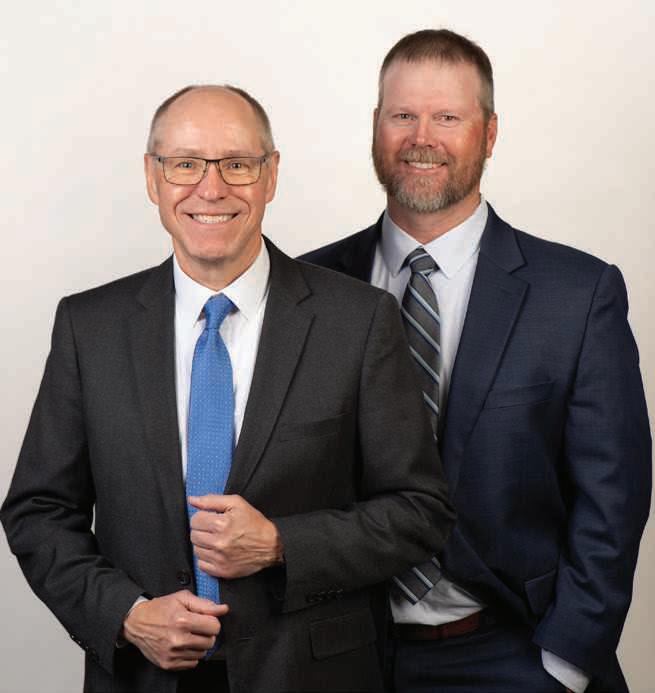
As we prepare for our annual meeting and celebrate the 85th anniversary of our cooperative, we reflect on the journey that has brought us to this moment. “Powering Generations; 85 Years of Service” is more than just a theme; it is a testament to our enduring commitment to the communities we serve. For 85 years, our cooperative has been a steadfast presence, providing reliable, affordable electricity to homes, farms, and businesses across 4,500 square miles of Western South Dakota.
It does not seem that long ago that we were talking about our 75th anniversary at West River. I dug into the history and saw how fascinating it was to see those early pioneers making some very brave moves to get West River Electric started. It was a time of transition in our country and in our industry. Here we are 85 years later, and our industry and cooperative are in a period of transition too. Where will that take us over the next number of years? We are not entirely sure, but we would guess our early forefathers of West River were not sure either. It all started June
12, 1939, when the original articles of incorporation and bylaws were signed. West River transitioned from a dieselpowered light plant in Wall to what we are today serving over 20,000 meters. On July 15, 1939, our first REA loan was approved for $145,000 to energize 445 new members. What would that cost us now? We would venture to guess it would have another two zeros on the end and would not come anywhere close to including the infrastructure to get electricity there. Surely a monumental transition in our lifestyles back then to see REA come into the yards to turn on the lights. 436600
As we look back on our 85 years and especially the last couple of years, we continue to power generations of the future. However, the transition in our industry makes us fear what might be to come. A very vocal group continues to force our country and government to transition from dependable, always available base load generation, such as coal and natural gas, to renewable energy like wind, solar and battery supply. Not only is this transition away from affordable, reliable power a risk, it is a life/safety issue, a business and economic issue and no one mentions, the elephant in the room; a major national defense risk. We continue to fight alongside many of our colleagues to be certain that for the next 85 years we can continue to power generations to come with the electrical needs you have become accustomed to.
At West River Electric, we have transitioned from a small coop to one of the fastest growing cooperatives in the region. We added 903 new accounts during 2023: a new record, and we look on par to come close to that record again this year. The growth has been driven by new apartments and smaller,
affordable housing cross our entire service territory. We have seen additions to our membership with new businesses too. A surprising note is our sales of kilowatt hours have stayed flat. In our analysis, we see the average kWh used by our members showing a decrease in average kWh usage over the last 5-10 years. This is especially noticeable in our commercial members. This transition to energy efficient lighting, appliances, and heating/cooling has driven sales down on a per member basis.
Our margins for 2023 were the highest we have seen in years at $5.7 million compared to $3.6 in 2022. A large part of that margin was our allocation from Basin Electric and Rushmore amounting to $1.8 million. We brought in $1.0 million from our revenue deferral fund that helped bolster those margins, but unfortunately that deferral fund will be depleted in 2025. Our equity was 32.4% compared to 31.9% in 2022. Our plant grew by $15.7 million to over $184 million while our long-term debt increased 8.7% to over $99.5 million. It is important for our growth to have the earnings to meet our debt obligations and plant growth. 12061200
Besides growth in electric plant and new services, the cost of doing business within our industry has exploded. Many items of material have seen anywhere from 50-150% growth in costs. Vehicle costs, labor, and supplies have not decreased either. Supply chain continues to be an issue with some items. Due to all these pressures, the Board made the painful decision to institute a rate adjustment in March 2024. We had not made any adjustments since 2016; 8 years without an increase. There are not many other items that provide anywhere near the value of electricity in our lives that have not increased in 8 years, especially given the pandemic struggles.
The Board approved retiring $1.0 million in capital credits again this year.
This amount will be applied to 2002 and part to 2003 and 2004. With our continued growth, and to keep margins as low as possible, we have reduced the retired amount the last 2 years from what we had previously retired in 2021 and 2022. We feel it is important to give capital credits back each year to show the power of cooperative membership.
There were several large projects we completed this past year. A new transmission line was built from the Rushmore substation to the new Ashland substation near Box Elder. We rebuilt the transmission line in that same area that runs into the Rapid City substation near Cambell Street. We completed the Eglin substation near Exit 61. We are putting the final changes on the Ashland sub in Ashland Heights near the soccer fields north of Exit 61. We are completing the dirt work on the Country Road/Haines substation site. However, we will not be doing any actual construction on that site for several years to come. We are nearing completion of a battery storage project with a Department of Energy grant to study battery storage on, or near, a military base having critical infrastructure. We are going to use the data to show how battery storage works in our climate and variable conditions. This has been over 5 years in the making. As you can see, these are large projects that our team was able to get across the finish line with all the challenges we have faced. 12139600
We would like to thank our employees for another successful year. They continue to make safety a top priority. This transitioning industry has not been without challenges, but they have risen to meet these challenges head on. We could not be more proud of all the many hours they endure answering members questions, installing, and upgrading lines and services, repairing outages at all times of the day or night, and getting bills out on time. We have a young, diverse employee group that just amazes us with their great attitude and work ethic that help serve our members’ best interests.
A special thank you to our Board of
Directors. They have had to make some tough decisions, and will in the future, as we power future generations in this transition as we pass this 85-year mark. We would especially like to thank Howard Knuppe, Director from District 1, for 36 years of service to our member/owners. We have two candidates who will try to fill his shoes during this transition. He was a quiet leader who when he spoke, everyone listened. He always had the member at heart while still remembering how important our employees are to our cooperative. Howard, you will be dearly missed.
Another transition will be in the CEO/Manager position. Dick has decided, too, it was time for him to transition into being a retiree and allow the younger generation to power the future moving forward. An announcement of his successor will be around the annual meeting.
This 85-year milestone is a tribute to the dedication of those who came before us. Our founders, with their vision and determination, laid the foundation for a cooperative that would grow and thrive. Over the decades, we have adapted to changes in technology, weathered storms—both literal and metaphorical— and remained true to our mission of serving our members best interests.
But our work is far from done. As we look to the future, our Board and team are focused on continuing to meet the evolving needs of our members. Whether it is exploring new ways of meeting the transitions in our business, enhancing grid reliability, or expanding services to meet the demands of the next generation, we are committed to powering the future with the same dedication that has defined our past. We hope that you can join us on another step powering future generations at our annual meeting on October 12, starting at 10:00 AM.
Thank You,
Andy Moon, Chairman West River Electric
Dick Johnson, CEO/Manager West River Electric
(USPS No. 675-840)
Our Mission:
To serve our members’ best interest.
Our Vision: We will be a high performing co-op.
Our Values:
1. Safety 2. Accountability
3. Integrity 4. Innovation
5. Commitment to Community
This institution is an equal opportunity provider and employer.
Board President: Andy Moon
Board of Directors
Stan Anders – Vice President
Jamie Lewis – Secretary
Chuck Sloan – Treasurer
Larry Eisenbraun
Peter Blake
Marcia Arneson
Howard Knuppe
Sue Peters
CEO and General Manager: Dick Johnson –dick.johnson@westriver.coop
Editor Amanda Haugen –amanda.haugen@westriver.coop
WEST RIVER ELECTRIC COOPERATIVE CONNECTIONS is the monthly publication for the members of West River Electric Association. Members subscribe to Cooperative Connections as part of their electric cooperative membership for $6 a year. West River Electric Cooperative Connections purpose is to provide reliable, helpful information to electric cooperative members on matters pertaining to rural electrification and better living. Nonmember subscriptions are available for $12 per year. Periodicals Postage paid at Wall, S.D., and at additional mailing offices. Postmaster: Send address changes to West River Electric Cooperative Connections, PO Box 412 , Wall, SD 57790-0412.
Other correspondence to: West River Electric Cooperative Connections, 3250 E Hwy 44, Rapid City, SD 57703; telephone (605)393-1500, Exts. 6564, 6531 or 6522; fax (605)393- 0275; e-mail amanda.haugen@westriver.coop.
Cooking and heating are the leading causes of home fires and fire injuries, and winter months are the peak time for fire-related deaths. Fire Prevention Week (Oct. 6-12, 2024) is the perfect time to review and practice fire safety.
The good news: Deaths from home fires in the U.S. have trended downward since the 1970s, according to Injury Facts, but even one death from a preventable fire is too many. While fire doesn’t discriminate by age, it is the third leading cause of death for children 1 to 14.
When cooking, make fire safety a priority by keeping these tips in mind:
• Be alert; if you are sleepy or have consumed alcohol, don’t use the oven or stovetop.
• Stay in the kitchen while you are frying, grilling, boiling or broiling food.
• Keep anything that can catch fire away from your stovetop.
Heating is the second leading cause of home fires. Follow these tips:
• Keep all flammables, like paper, clothing, bedding, drapes or rugs, at least three feet from a space heater, stove or fireplace.
• Never leave portable heaters and fireplaces unattended; turn off heaters and make sure fireplace embers are extinguished before leaving the room.
• If you must use a space heater, place it on a level, nonflammable surface, like ceramic tile, not on a rug or carpet.
• Keep children and pets away from space heaters.
• When buying a space heater, look for models that shut off automatically if the heater falls over.
About three out of five fire deaths happen in homes without working smoke alarms. Smoke alarms are a key part of a home fire escape plan providing early warning to reduce your risk of dying in a fire. The National Fire Protection Association recommends you:
• Install smoke alarms on every level of your home, inside bedrooms and outside sleeping areas on the ceiling or high on the wall.
• Keep smoke alarms away from the kitchen, at least 10 feet from the stove, to reduce false alarms.
• Use special alarms with strobe lights and bed shakers for
people who are hard of hearing or deaf.
• Test smoke alarms monthly.
• Replace batteries in your smoke alarm and carbon monoxide detector annually.
• Replace smoke alarms that are 10 or more years old.
Always put your safety first; if you are not confident in your ability to use a fire extinguisher, get out and call 9-1-1. The American Red Cross cautions you to evaluate the situation and ensure:
• Everyone has left or is leaving the home
• The fire department has been called
• The fire is small, not spreading, and there is not much smoke
• Your back is to an exit you can use quickly
Remember the acronym PASS:
Pull the pin.
Aim low at the base of the fire.
Squeeze the handle slowly.
Sweep the nozzle side to side.
Source: National Safety Council

“Watch Out for Power Lines!”
Archer Rindels warns readers to be careful around power lines. Thank you for your picture, Archer! Archer’s parents are Kyle and Rochelle Rindels, members of Sioux Valley Energy.
Kids, send your drawing with an electrical safety tip to your local electric cooperative (address found on Page 3). If your poster is published, you’ll receive a prize. All entries must include your name, age, mailing address and the names of your parents. Colored drawings are encouraged.
SOUP

CHEESY CHICKEN BUNDLES
Ingredients:
1 (11 oz.) can condensed cream of chicken soup
1/2 cup milk
3/4 cup Velveeta, shredded or cubed
1 (10 oz.) can chunk chicken, drained and flaked
1 (8 oz.) can crescent rolls
Method
Combine soup, milk and cheese. Heat until melted and smooth. Pour into a 7x11 inch pan that has been sprayed with vegetable oil.
Separate crescents into 8 triangles. Place 2 tbsps. of chicken on wide end of crescent roll. Pinch to seal. Place on top of sauce.
Bake uncovered at 375 degrees for 25 minutes and until golden brown. Serve with sauce on top.
Yields eight chicken bundles or four servings.
Janet Ochsner
Box Elder, S.D.
Ingredients:
3 boneless chicken breasts
1 tbsp. minced garlic
1 can crushed tomatoes (28 oz. can)
1 can tomato sauce (15 oz. can)
1 tsp. salt
1 tsp. ground black pepper
2 tsp. Italian seasoning
4 cups chicken broth
1 cup parmesan cheese (freshly shaved)
1 cup heavy whipping cream
8 oz. rotini pasta (uncooked)
1 1/2 cup shredded Mozzarella
Method
Add the chicken breast, minced garlic, crushed tomatoes, tomato sauce, salt, pepper, Italian seasoning and chicken broth to the Crock-Pot.
Cover Crock-Pot with lid and cook on low for 6-8 hours.
Shred the chicken. Stir in the shredded parmesan cheese, heavy whipping cream and rotini pasta. Cover and cook on low for 30 minutes.
Top the individual soup servings with mozzarella cheese.
Kayla Beaner Centerville, S.D.
Ingredients:
4 tsps. Garam Masala blend
1/2 tsp. garlic powder
1/2 tsp. ground ginger
1/2 tsp. ground turmeric
1/8 tsp. crushed red pepper
4 tbsps. butter, divided
1 can (14.5 oz.) petite diced tomatoes
1 med. red onion, chopped
1 1/4 lbs. boneless skinless chicken breasts, cut into 1-inch cubes
1/4 cup heavy cream
1/2 tsp. sea salt
Method
Mix Garam Masala, garlic, ginger, turmeric and crushed red pepper in small bowl. Heat large non-stick skillet on medium heat. Toast seasoning mixture 1 min. or just until fragrant, stirring constantly. Add 2 tbsps. of the butter to skillet, swirling to melt. Add onion; cook and stir 2 to 3 mins. until softened. Stir in tomatoes; cook 5 mins. Carefully transfer mixture to blender container; cover. Blend until smooth, scraping sides as needed. Return pureed sauce to skillet. Bring to simmer on med.low heat. Add chicken; cook 8 to 10 minutes or until chicken is cooked though, stirring occasionally. Stir in remaining butter, cream and salt until well blended. Simmer on med.-low heat 2 to 3 minutes until sauce is slightly thickened. Stir in additional crushed red pepper to taste and serve with hot cooked basmati rice or warm naan bread, if desired. Garnish with fresh cilantro leaves, if desired.
McCormick.com
Please send your favorite recipes to your local electric cooperative (address found on Page 3). Each recipe printed will be entered into a drawing for a prize in December 2024. All entries must include your name, mailing address, phone number and cooperative name.
Notice is hereby given that a nominating petition for the following candidate has been filed for Director, pursuant to Section 4, Article V of the Bylaws of West River Electric Association, Inc. This candidate for the position of Director will be voted on at the October 12, 2024, Annual Meeting from the following district: District No 1: Consisting of the area served by the Cooperative in Pennington County, South Dakota, West of the Cheyenne River.
Regular 3 Year Term
Steve Edoff, 16455 Highway 1416, New Underwood, SD 57761
Kim Morey, 5309 Silverton St, Rapid City, SD 57703
You are further notified that the above nominations by petition are made for the position of Director for a three-year term to fill the expired term of a director and that one individual from each district will be elected at the October 12, 2024, Annual Meeting of the Association.
Dated this 19th day of August 2024. Jamie Lewis, Secretary, West River Electric Association, Inc.

This form is to designate the voting delegate of an organization. This Form should be completed and signed by an officer of the organization and brought to the meeting.
Voting Authorization Necessary for Organizations Non-individual members such as schools, municipalities, churches, organizations, and corporations are entitle d to representation and one vote, but the proper procedure must be followed to exercise this right.
Each member organization should designate a representative who is an officer, shareholder, or member of their organization. This form must be signed by an officer of the governing body.
Authorization to Vote
This is to certify that __________________________________________ of ______________________________________ in a duly assembled meeting, designated ____________________________ who is a(n) Officer, Shareholder, or Member (CIRCLE ONE) of said organization, to represent the ________________________________ at the regular Annual Meeting of the members of West River Electric Association, Inc., to be held October 12, 2024, and said person is authorized to cast such member’s vote on all issues that may come before said meeting.
The undersigned verifies that (s)he is the _________________________ Of said organization and authorized to execute this instrument on behalf thereof.
The Annual Meeting of members of West River Electric Association, Inc. Will be held at 10:00am on Saturday, the 12th of October 2024, at the Wall Community Center, in the town of Wall, County of Pennington, State of South Dakota, for the purpose of:
1. Receiving reports of officers, directors and committees;
2. Electing one director from each of the (3) districts for a term of three (3) years to replace those directors whose terms expire;
3. Approving, ratifying and confirming all the acts of the Directors of the Association and its officers taken prior to this annual meeting;
4. Transacting any and all business with may be necessary, convenient or desirable in connection with any of the foregoing at said meetings or at any properly scheduled adjournments hereto; Dated at Wall, South Dakota, this 19 day of August, 2024 Jamie Lewis, Secretary, West River Electric Association, Inc.

Need for auxiliary aids or services: Facilities are accessible to people with mobility impairments. If you need auxiliary aids or services in order to participate in the meeting (e.g., sign language interpreters, assistive listening devices, materials in alternative format), please submit a request to West River Electric at 605-279-2135. To ensure auxiliary aids or services are available, please make the request(s) at least 10 days in advance to the meeting.
1. Each voter must be a member of West River Electric Association, Inc.
2. Each member has only one vote.
3. For joint memberships, where the service is in the name of two individuals, one of the individuals may vote, but not both, and neither are eligible to have any other memberships.
4. Spouses may both have individual memberships, and under South Dakota statutes, one spouse may vote on behalf of the other, provided that the other has not indicated otherwise at the time of the meeting
5. Each member organization should designate a representative who is an officer, shareholder or member of the organization to vote for a partnership, incorporated business, association, church, school township or other political body. The said person must have a completed authorization form, signed by an officer of the organization prior to the WREA Annual Meeting. The form can be found to the left of this page.
6. No campaigning by or for director candidates is allowed in the hall.
7. At registration, the member will be given a slip that will be exchanged for a ballot at the time of voting.
Notice is hereby given that the official list of incumbent Directors seeking re-election for the position of Director includes the following individuals pursuant to Section 4, Article V of the Bylaws of West River Electric Association, Inc.
District 1: Consisting of the area served by the Cooperative in Pennington County, South Dakota, West of the Cheyenne River.
ï Vacant
District No. 2: Consisting of the area served by the Cooperative in Meade and Ziebach Counties, South Dakota.
ï Stan Anders: PO Box 40, Union Center, SD 57787
District No. 3: Consisting of the area served by the Cooperative East of the Cheyenne River.
ï Andy Moon: 21801 Pedro Rd, Creighton, SD 57790
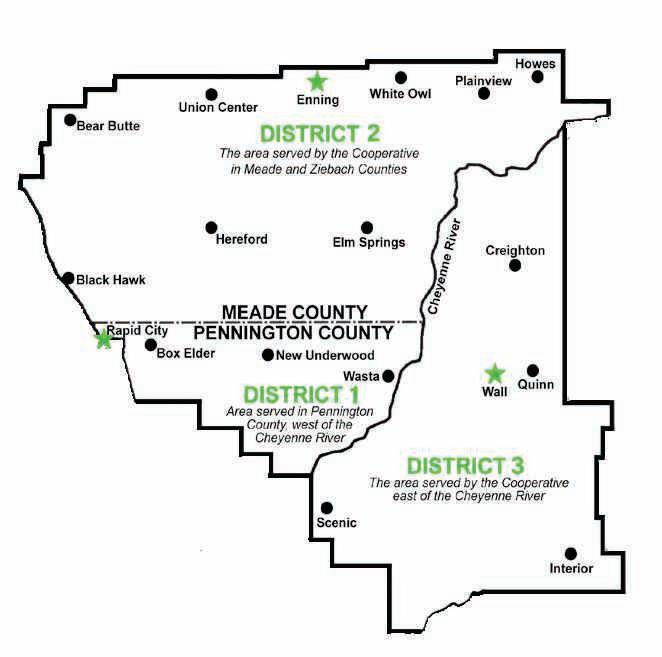
You are further notified that the above nominations are made for the position of director for a three-year term to fill the term of the expiring Director, and that one individual from each district will be elected at the October 12, 2024, Annual Meeting of the Association.
Dated this 15th day of April 2024.
By
Jamie Lewis, Secretary
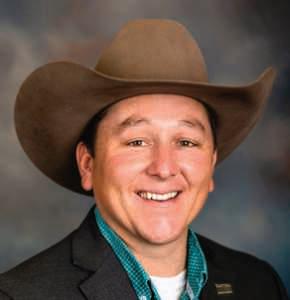
Steven Edoff is seeking election to the Board for District 1 director position. For the past 6 years, he and his wife, Michelle, have raised their five children on a small acreage just east of his hometown, New Underwood. He currently works for a financial cooperative as a financial officer and has grown to understand the tremendous value that being a member-owner of a cooperative brings to our communities. Most of his professional work experience has been in banking and budget analysis.
Steven served 6 years in the regular Army where he was deployed in support of Operation Enduring Freedom in 2012 to Afghanistan as a member of the 4th Infantry Brigade Combat Team and served as a gunner on a M777 howitzer. After his time in the Army, he and his wife moved back home to South Dakota to raise their family. This allowed him to join the SD Army National Guard where he served another six years before deciding to hang up his combat boots and focus more of his attention on his family and work.
He attended Black Hills State University majoring in accounting. When he’s not busy with work, he enjoys volunteering and helping people out however possible. He is currently a member of the New Underwood Community Church, VFW Post 9120, American Legion Post 256, and the Wall Volunteer Fire Department. He also enjoys chasing his kids around to football, wrestling, baseball, and rodeo events. Steven appreciates the opportunity to run for this open position and wishes Howard well in his retirement. He looks forward to the chance to represent District 1 and would appreciate your vote on Oct. 12th!
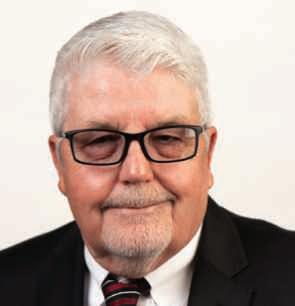
Stan Anders is a lifelong member of the Union Center community and has been in the trucking business since 1973 until recent retirement in 2023. He is past board chairman of the South Dakota Trucking Association, past commander of the NAJA Shrine Air Patrol, served as secretary of the Rapid City Shrine Club and secretary of the Rural Meade Ambulance Service. Stan is a Credentialed Cooperative Director and Board Leadership Certified as well as Director Gold certified. Stan and his wife, Chris, have nine children and 18 grandchildren. I would like the opportunity to continue to represent the members of District 2.
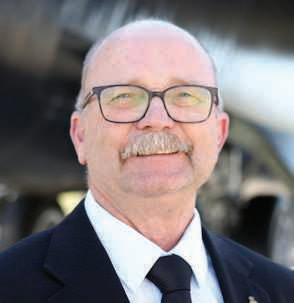
Kim Morey is seeking election to the Board for District 1 Director position. The Air Force brought Kim to Ellsworth AFB as a Gunner on B-52s in 1978. He grew to love western South Dakota so much that he has called it home ever since then. He retired from the Air Force in 1991 and the State as an Assistant Professor of Business at Black Hills State, and an Administrator at Western Dakota Tech in 2011. Additionally, Kim worked as a technician constructing communication and utility lines overhead and underground for about 6 years. He has started or helped start 3 small businesses that are all still running and employing a total of more than 100 people in our area. In the Air Force, Kim was in charge of the section that provided power and HVAC systems for the 165 missile facilities spread over 14,000 square miles of western SD. He has been President of the Black Hills Society for Human Resource Management, Chair of Leadership Rapid City, and Highmark Credit Union. Kim is a Director on the Box Elder Chamber of Commerce Board and President of the SD Air & Space Foundation.
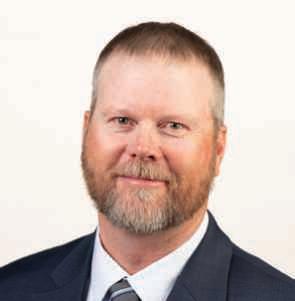
Andy Moon is a Credentialed Cooperative Director, serves on the board as president and is currently working on receiving his Board Leadership Credentials. He was born and raised on a farm/ranch near Montevideo, MN and graduated from SDSU with a B.S. in Business Economics. He has been employed by Kjerstad Livestock as a Ranch Foreman since 1995. Andy is a member of St. Patrick’s Catholic Church and is also Chairman of the SDREA America’s Electric Cooperative PAC. Andy and his wife, Lisa, have three children and one grandchild.
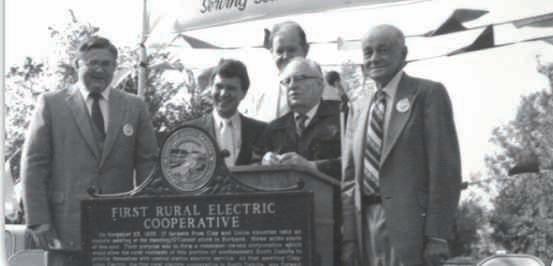
Jacob Boyko jacob.boyko@sdrea.coop
Picture life in rural South Dakota 100 years ago. Each morning, families woke before dawn to work by the flicker of kerosene lamps, hand-pumped water to fill a gas-powered wringer-washer, and retrieved breakfast ingredients from a dripping ice box. Looming in the backs of producers’ minds were fears that the market would trend downward and they may not be able to cover their debts, or even harvest their fields.
Today, South Dakota’s rural farmers and ranchers enjoy virtually all of the accommodations of modern living their suburban counterparts enjoy. Past luxuries like running water, full-time electricity, internet and telephone are now standard, and many farmers enjoy stronger economic security compared to the past’s tumultuous markets.
That’s because for over 100 years, rural South Dakotans have pooled their resources by forming cooperatives that level out some of the disparities between rural and urban life. Thanks to members’ ingenuity, rural America is not just a viable, but a thriving place to live and work.
The first cooperatives in South Dakota were agriculture-focused. Far too often, an
oversupply of goods led to price crashes, resulting in farmers unable to economically harvest crops or market livestock. This led to tremendous waste and crushed livelihoods.
As producers grew weary of the uncertain market, they organized to collectively market and distribute their products: they coordinated, shared risk and pooled resources.
South Dakota’s earliest farm supply and marketing cooperatives started popping up a little after the turn of the 20th century. The South Dakota Secretary of State’s office lists Lake Andes Farmers Cooperative, formed in 1909, as the oldest ongoing cooperative in the state.
During this early period, cooperatives operated in a legal gray area. Since producers working collectively in a cooperative setting could be viewed as monopolistic or collusive, they were under careful watch by the Federal Trade Commission as well as their larger competitors.
That changed in 1922 with the passage of the Capper-Volstead Act.
“Capper-Volstead allowed producers to come together and market their products and not be in violation of the Sherman Antitrust Act,” explained Brenda Forman, South Dakota Association of Cooperatives executive director. “[Cooperatives] were not considered to be a monopoly as long as they were a cooperative association formed
Clay-Union Electric Corporation was the first electric cooperative in South Dakota.
by producers, owned by the members, one member gets one vote in cooperative elections, etc.”
The presence of ag cooperatives surged in the 1930s as producers looked for stability during the Great Depression, the South Dakota Farmers Union says. With effectiveness proven, the cooperative strategy has stuck around since.
Today, there are 63 farm supply and marketing cooperatives serving over 130 South Dakota communities, Forman said.
Those same visionaries who established the first ag cooperatives identified another need that was not being met. Using the same cooperative model that changed their lives once already, farmers would bring power to the prairie.
Before energy infrastructure was widespread, many small towns in South Dakota relied on local power plants. However, with distribution lines only serving the city, living even a mile or two out of town was the difference between flipping a light switch and carrying a lantern. Despite requests from farmers to run lines to their homes – some of whom even offered to pay installation costs – most municipalities and investor-owned utilities (IOUs) refused because undertaking the effort didn’t lead to any meaningful profit. Even many of the state’s elected representatives seemed resigned to the idea
that the future of energy for their farming constituents was tied to on-site generation, like the modest Delco–Light plants that could power a few small appliances and light bulbs. To them, it seemed laughable that there was any feasible way to run lines in a state where the service would average out to a sparse 2.2 customers per mile of line, and for many, that was the end of the conversation.
The narrative changed when President Franklin D. Roosevelt expanded his New Deal programs to modernize rural America, creating the Rural Electrification Administration (REA) to finance ambitious projects.
The profit-minded IOUs were largely uninterested in expanding into sparse territory for measly returns, and little progress was made toward Roosevelt’s vision.
In 1936, once it was apparent IOUs wouldn’t be making the foray into rural territories as farmers had hoped they would, Roosevelt signed the Rural Electrification Act. Now, cooperatives could organize and receive REA loans while the IOUs idled.
A group of 17 farmers from Clay and Union counties jumped at the opportunity to finally bring their homes into the modern age. Just months after the REA was established, and at a time when just 5% of South Dakota farms had power, the group hatched out a plan to secure an REA loan for their newly-formed Fairview Rural Electric System, today Clay-Union Electric Corporation.
Going door to door and collecting $5 sign-ons from neighbors ranging from ecstatic to skeptical, the cooperative finally got the REA’s green light and received a $70,000 loan to build 67 miles of line that would serve about 300 members, according to a 1936 Argus Leader report.
The success of South Dakota’s first electric cooperative brought hope to still more than 90% of South Dakota farmers without power. It wasn’t long before dozens more newly-formed cooperatives were each going door to door collecting sign-on fees to secure their own REA loans.
In 1946, roughly 10 years after the state’s first electric cooperative debuted, rural farmers and ranchers from the state’s
remote northwest corner met in Lemmon to form their own cooperative. The board understood securing a loan from REA to serve such a vast and sparse territory would be a big ask, so they opted to charge members a $10 monthly minimum, which was twice the minimum rate of most South Dakota cooperatives, and equal to about $170 today.
Even so, would-be members agreed to the terms of the longshot project and paid their $5 membership fee. Despite federal hesitation about the feasibility of such a project, the REA loan was approved.
Grand Electric Cooperative received more than $1.8 million over two loans that would build 1,127 miles of line and serve 948 members. The investment amounted to one of the REA’s largest and riskiest yet in the state, but proved to be a success.
Cooperative members did the impossible; the wires in northwest South Dakota had finally been energized. Board members then eyed another ambitious goal – bringing telephone to Northwest South Dakota.
West River Cooperative Telephone Company was formed as a separate entity, but in the spirit of cooperation, the telephone and electric cooperative would be jointly operated. The two would, and still to this day, share a building, staff and infrastructure.
“Up here, we cover almost 8,000 square miles and have 4,000 miles of wire, but we only have 1,800 members,” explained Eric Kahler, the cooperatives’ joint general manager. “When you look at the economics of this type of service territory, if you’re in the business to make money, you’re not going to be too successful here. The cooperative model is really the only model that could work here.”
And the community knows that fact and is grateful for their cooperative, says Patricia Palmer, who has spent much of her last 63 years working in Grand Electric and West River Telephone’s member services.
“They’re thankful,” she said. “Very thankful. We have a terrific telephone work crew and line department. At times, they work tirelessly in horrible weather conditions… You can’t believe the thank you notes that we get.”
Growing up on a farm near McIntosh, Palmer has a firsthand account of the impact
of cooperatives. And she says it’s one she will never forget.
The night she watched her family’s farmhouse light up for the first time was also the beginning of a new chapter, she recalled. A chapter with an automatic washer, a refrigerator and a toaster.
As times change, cooperatives continue to be at the forefront of bringing service that might otherwise be out of reach.
“When I came to the cooperative, it was just telephone and electricity, and now we have high-speed internet and TV,” Palmer said. “Over the years, the cooperative has really grown!”
The cooperative model is also used in many other sectors; there are 34 South Dakota credit unions that offer memberowners better interest rates and reduced fees compared to for-profit banks.
Even some rural water systems, while not wholly cooperatives themselves, borrow some of the cooperative fundamentals to make serving large areas more practical.
“Cooperatives are pretty significant in the impact they’ve had,” Forman said. “And the other cooperatives we have – there are daycare co-ops, food co-ops, education co-ops – there’s a number of different structures that the cooperative model has been used for, because of that ownership and one member, one vote.”
Today, there are 141 cooperatives in the state, providing more than 78,500 jobs, $2.8 billion in worker salaries and $3.9 billion in gross domestic product (GDP), according to a South Dakota State University study titled The Economic Impact of Cooperatives in South Dakota.
That means cooperatives contribute almost 13% of South Dakota jobs, more than 11% of salaries, and 6.2% of the state’s entire GDP.
“In a cooperative, your board is local,” Forman said. “[The co-op board and employees] support and participate in sports functions, 4-H barbeques, you may go to church with them, or they may be at family dinner. Which means when something is a concern or challenge, you have somebody to go to and you have contacts close that know you and understand the system.”
We Paid For:
We Owe as of Dec. 31:
We Own as of Dec. 31: 2022 2023
Members: 14,911
Meters: 19,357
Total # of Employees: 56
Service Area: 4,500 sq mi
Transmission line: 37 mi
Overhead Line: 2,056 mi
Underground Line: 591 mi
Avg Residential Usage: 1014 KWH
Avg Residential Bill: $133
Avg Sm Commercial Usage: 1,421 KWH
Avg Sm Commercial Bill: $207
Avg Lg Commercial Usage: 16,032 KWH
Avg Lg Commercial Bill: .$1,807
Meters Per Mile of Line: 7.11
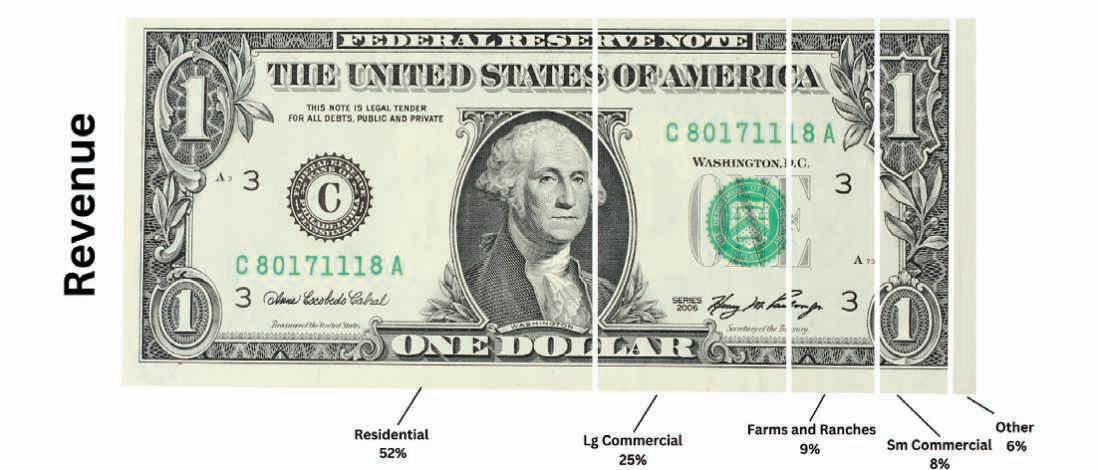
Members: 15,230
Meters: 20,260
Total # of Employees: 59
Service Area: 4,500 sq mi
Transmission Line: 40 mi
Overhead Line: 2,043 mi
Underground Line: 607 mi
Avg Residential Usage: 958 KWH
Avg Residential Bill: $128
Avg Sm Commercial Usage: 1,358 KWH
Avg Sm Commercial Bill: $200
Avg Lg Commercial Usage: 15,207 KWH
Avg Lg Commercial Bill: $1,812
Meters Per Mile of Line: 7.53

The meeting was called to order by President Andy Moon at 10:00 a.m. at the Wall Community Center in Wall, South Dakota.
All Veterans in attendance were asked to stand and be recognized. The membership and all in attendance recited the Pledge of Allegiance. The National Anthem was sung by Ms. Athena Simons for the membership.
Secretary Jamie Lewis reported for Todd Whitaker, Chairperson of the Credentials and Election Committee, that 114 members of West River Electric Association, Inc. were registered and that a quorum was present at the meeting. At present, we have a total of 15,230 members.
A motion was made and seconded to dispense with the reading of the Notice of Annual Meeting and the Affidavit of Mailing and filed in the Minute Book for September 18, 2023. Motion carried.
The minutes of the October 8, 2022, Annual Meeting were presented for approval. President Moon asked for a motion to approve the minutes as presented. A motion was duly made and seconded to approve the minutes as mailed. Motion carried.
President Moon introduced the guests in attendance.
Greg Erlandson, Attorney for West River Electric, read the Notice of Incumbent Directors seeking re-election for the position of Director from April 21, 2023, based on Section 4 Article 5 of the Bylaws. The Directors seeking re-election; Charles “Chuck” Sloan from District II and Larry Eisenbraun from District III. Nominating petitions for the position of Director are due not less than 60 days prior to the annual meeting. Mr. Erlandson read the Notice of Nomination by Petition for District I director candidates Wendy Bechen, Aldo Hall, and Peter Blake.
Greg Erlandson announced that if any member had not yet registered, they should go and register at this time. He then announced registration was now closed.
Attorney Erlandson asked for a motion to cast a unanimous ballot for Chuck Sloan from District II and for Larry Eisenbraun for District III. A motion was made, seconded, and carried to cast a unanimous ballot for District II and III.
Mr. Erlandson announced the election for the vacant position for District I. Each candidate, Wendy Bechen, Aldo Hall, and Peter Blake had 3 minutes to address the membership. Voting for the Director position for District 1 was then held.
President Andy Moon welcomed the membership and stated it was great to see everyone at our 84th Annual Meeting. Our theme this year is Energizing the Future, Bridging the Gap. Moon highlighted the general capital credit retirement for 2023 to everyone who had been a member in 20012002 by returning the Basin and Rushmore capital credits and paying off West Rivers capital credits. Your Cooperative continues to see additional growth and this growth helps all our members as it spreads our fixed costs over more services. The cost of materials, supplies, transportation, and labor have all increased greatly in the last 2 years. It looks like an increase sometime in 2024 is inevitable. Our goal in a recent strategic planning session was to look at our past but really focus on the future of our next generation providing electricity and making sure we are prepared for what lies ahead in our industry. Moon thanked the employees for stepping up and bridging the gap following the retirement of 4 long-term employees in the last 18 months and continuing our goal of excellence to our members. He introduced the Board of Directors who collaborate with Moon and work so hard on your behalf. Moon thanked Jerry Hammerquist for serving 39 years with 20 of those years as Board Chair representing the member at the end of the line while making sure the coop is successful and our employees are taken care of.
Dick Johnson, CEO/General Manager, began with highlighting the theme of Energizing the Future, Bridging the Gap. He spoke of the cooperative margins, assets, equity, and sales with 568 new services installed in 2022. While building those services we have seen a large increase in what it costs us to build new services as well as maintain our current electrical infrastructure and the extended lead time on receiving materials whether a supply shortage of raw material or demand all over the country. He posed the question of our current
rates being adequate to recover costs to maintain our lines along with the ever-increasing cost of material, labor, transportation, and power?
We have not had an increase since 2016, and what combination of increase whether in the base charge, energy charge and/or the demand charge would we need to make sure we keep the coop on sound financial footing in future years. He stated we are seeing more members install solar and battery storage. He stated that with all the renewable activity the challenge is reliability and having the necessary base load generation that coal-fired and natural gas generation can provide. He stated we have generations of employees at West River and in January we had 2 of our long-term leaders retire, Cheryl Walker and Wayne Shull. We have a very young and energized group of future leaders for WREA, and we can’t thank them enough for helping us bridge the gap between current and future members. Johnson thanked the current Board of Directors for their support and a special thanks to Jerry Hammerquist for 39 years of service.
Jerry Hammerquist was recognized for 39 years of service as a Board Director.
Employee years of service were presented: 25 years-Tracea Ladner, 20 years-Brandon Arnold, 15 years-Alicia Fortune, Robert Raker, & Christine Ritter, 10 years-Stacey Parkis, Eric Emery, & Adam Daigle, 5 years-Carolyn Schulz & Tucker Hohn and Director milestones: 35 years-Howard Knuppe, 10 years-Jamie Lewis.
President Moon called for old business. There was none.
President Moon called for new business. There was none.
Mr. Erlandson announced the winner of District I election as Peter Blake. Erlandson thanked Wendy Bechen and Aldo Hall for their interest in serving on the Board of Directors.
Drawings were held for door prizes.
The drawing was held for 6 - $500 Scholarships for a high school senior or full-time student currently attending college or technical school. We had 5 students in attendance and the winners were Mandie Chambliss, Hailey Wright, Linkin Ballard, Kamryn Shull, and Quinn Moon.
The grand prize winner was Norman Eisenbraun.
The jackpot winner of $1,100.00 was Lucille Blashill. Next year, the jackpot will be $1,500.
The meeting was adjourned at 11:18 a.m.

Jacob Boyko jacob.boyko@sdrea.coop
Scattered across open fields and through narrow mountain gulches, a careful eye can spot many of South Dakota’s nearly 250 long-lost prairie villages and prospecting towns.
Many of these communities were once thriving outposts, railroad hubs, farming villages and mining towns, but were dealt their final blows by the hardships of the dust bowl, changes to railroad systems and the depletion of natural resources.
Most of the towns are long forgotten, their existence marked only by the rotted shell of an old wood barn or a crumbling foundation poking up from the ground.
Thanks to the work of local historical societies who have pieced together the history of the communities’ “booms and busts” through old newspaper clippings, plat maps and land records, we can get a glimpse into the lives of the first rural South Dakotans and learn about the communities that once bustled with life.
Unique among a cavalcade of abandoned Black Hills gold-rush towns, Galena’s roots are in its silver. The town was settled in the late 1870s after prospectors Patrick Donegan and John F. Cochran discovered layers of lead and silver ore near Bear Butte Creek while searching for gold deposits.
The U.S. government removed the two men from the area in accordance with Native American treaties. However,
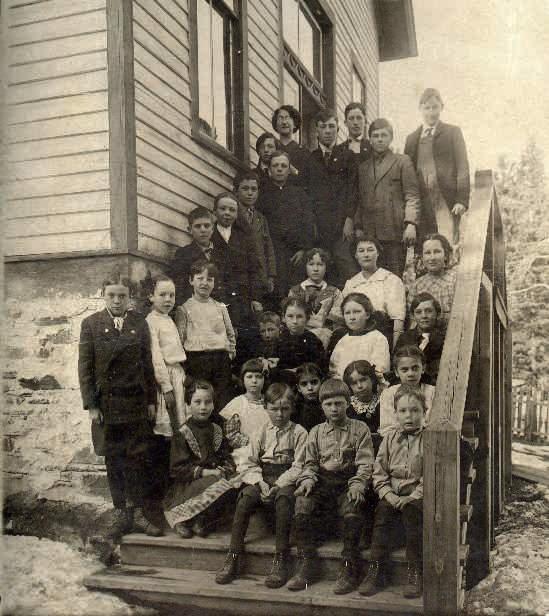
their exile turned out to be short-lived. Donegan and Cochran returned shortly after to mine their claim as more and more gold-hungry settlers tested the increasingly unenforceable treaties.
The claim, which would later become the Sitting Bull mine, turned out to be a mother lode, according to Galena Historical Society member Jeff Jacobsen.
Over the next several years, other mining operations popped up in the gulch as the miners’ families made Galena their new home. The town soon had multiple houses, a hotel, restaurant, stores, a catholic church, cemetery and school, attracting new settlers through its peak between 1881 and 1883.
Arriving from Chicago in hopes of expanding his fortune, Col. John Davey soon became a Galena mining heavyweight, buying up claims along the Bear Butte Creek, including the Sitting Bull claim.
Davey’s more than 125-man operation was running smoothly until trouble arose from a claim dispute. The owners of the nearby Richmond claim suspected Davey was digging too far into the hill and mining their silver. Davey claimed he was following the path of the ore, which according to mining law, he was allowed to follow onto another claim. The Richmond claim owners said the law didn’t apply to a horizontal blanket formation of ore, like the one in Galena.
A lengthy court battle ensued, and the judge shut down the Sitting Bull mine
until the ruling. Galena was suspended in controversy as many of the townsfolk found themselves out of work.
Thus began Galena’s rocky “boom and bust” cycle, Jacobsen explained.
“The boom time was when Col. Davey and other mines were producing, and then the lawsuit shut that down and you have a bust,” he said.
The judge ruled against Davey, and the operation never recovered. Galena would never again be the bustling town it was in the early 1880s.
“In 1892, some more people came into town and tried to start up again, so that was a boom, and then they went bankrupt, so there’s a bust,” Jacobsen continued. “There’s like three or four cycles like that in Galena.”
By the mid 1930s, the town had seen its final bust. The mining wasn’t comparable to the riches of the past, and interest in the gulch slowly started to fade. The tracks were removed and the school house closed in 1943.
Today, Galena is the best-preserved Ghost Town in South Dakota. On the second Saturday of each June, visitors can tour the town, visit the maintained graveyard and go inside the newly-restored schoolhouse, courtesy of the Galena Historical Society.
“It just kind of stands out,” Jacobsen said. “Galena is just one of the very few silver mining areas in the Black Hills when almost everyone else was trying for gold.”
In 1947, Deadwood resident Ollie Wiswell came across an orphaned coyote pup while he was out on a hike. He gave the pup, named Tootsie, to Fred and Esther Borsch of Galena. Tootsie gained fame as the mascot for the Borschs’ Deadwood liquor store, famously appearing on the store’s sign. Fred taught Tootsie to howl along to his singing, and the two recorded the album “South Dakota Tootsie.”
Tootsie, at this point a South Dakota mascot, rode through parades, was featured in an airline advertising campaign, and even embarked on a nationwide tour where she visited the White House and performed for President Dwight D. Eisenhower and Vice President Richard Nixon.
Gov. George Mickelson, a fan of Tootsie himself, signed legislation in 1949 making the coyote the state’s official animal. Tootsie died in 1959 and is buried near her home in Galena.
About nine miles northwest of Howard, just off state Highway 25, lay the remains of the ill-fated farming community, Argonne.
Marked by a blue historical sign, travelers-by can catch a glimpse of the town’s massive cement bank vault with its swinging iron door, an old silo bearing the town’s name, several concrete foundations, and a house falling into its own footprint.
The town’s founder, Dr. Louis Gotthelf, was a Prussian-born physician who emigrated to the United States in the aftermath of the Prussian revolution. Gotthelf staked his claim in 1881 and established the townsite in 1886.
The town was originally called St. Mary’s, named after Gotthelf’s daughter, and was strategically positioned along the Chicago and North Western railroad, with the streets running parallel to the railroad rather than the traditional east-west layout. Confusion with another St. Mary’s led to the residents voting to change the name to Argonne in 1920, which was chosen to honor local soldiers who had served in the Meuse-Argonne Offensive during World War I.
Despite having what should have been a prime location, Argonne failed to grow to Gotthelf’s satisfaction, and he left with his family for Parker in 1889.
A 1919 land boom in South Dakota finally turned things around for Argonne, Miner County Historical Society member George Justice Forster said.
“Most of the growth that happened initially was when it kind of took off as a
trade center,” he explained. “Suddenly the town had a railway depot, lumberyard, farmer’s cooperative and general store.”
In the early 20s, Argonne’s population boomed to about 100 residents, and the town offered new amenities including a school, blacksmith and post office.
Argonne’s peak was short-lived, and by 1930 the population had fallen to about 65 residents.
When Doug Jerlow moved to town in 1953, much of what was built in the town’s prime was left abandoned, and most of the businesses that did remain were struggling.
“It was past the peak,” Jerlow recounted. “One general store closed when the post office inside it closed, and that was an elderly lady who ran that and lived in a house by herself. The Haxby family’s store was open for maybe a year or two after that.”
Though the town was facing a bleak outlook, there remained one huge point of pride for Argonne: high school basketball.
Delbert Gillam, also known as the
Argonne Ace, led the Argonne Arrows to a 10-1 start in his junior year in 1953. Gillam also broke the state record for the most points scored by a player in a single game, making 31 field goals and 10 free throws, scoring 72. Argonne still holds this record.
The high school closed in 1956, but the community limped on for a few more years before the grade school closed in 1970 when the railroad picked up and left.
Doug Jerlow’s family, the last residents of Argonne, left town that same year.
Jerlow pointed out that while many other communities along the rail line like Unityville, Canova, Carthage, and Esmond struggled to recover from the abandonment of the line, for Argonne, it was the death blow.
Now, Forster and other members of the Miner County Historical Society are working to preserve the history of Argonne.
A historical marker will soon be placed east of Argonne on state Highway 25 that will tell the story of Argonne from its founding to its final household.
Though Jerlow now lives near Madison, he still farms near Argonne and owns most of the former townsite. As the unofficial mayor of Argonne, as Jerlow sometimes calls himself, he wants to keep the memory of his childhood hometown alive.
“It was just a nice community to grow up in,” he said. “Those small communities, I think it’s becoming harder to find them anymore.”


BOARD OF DIRECTORS
HOWARD KNUPPE 36 DISTRICT 1
MARCIA ARNESON 30 DISTRICT 2
LARRY EISENBRAUN 28 DISTRICT 3
ANDY MOON 18 PRESIDENT, DISTRICT 3
STAN ANDERS 18 VICE PRESIDENT DISTRICT 2
JAMIE LEWIS 11 SECRETARY, DISTRICT 1
CHUCK SLOAN 8 TREASURER DISTRICT 2
SUE PETERS 7 DISTRICT 3
PETER BLAKE 1 DISTRICT 1
MANAGEMENT STAFF
MIKE LETCHER 33 OPERATIONS MANAGER
DICK JOHNSON 30 CEO/GENERAL MANAGER
DAWN HILGENKAMP 28 CFO/MANAGER OF FINANCE
MATT SCHMAHL 25 CONSTRUCTION PROJECT MANAGER
BRENDAN NELSON 24 OPERATIONS SUPT-RC
SANDEN SIMONS 24 OPERATIONS SUPT-WALL
JENNY PATTERSON 17 MGR OF OFFICE SERVICES
AMY THOMPSON 17 MANAGER OF MEMBER SERVICES
ROBERT RAKER 16 MANAGER OF COMM AND PR
GERRI JOHNSTON 10 MANAGER OF INFORMATION TECH..
LINEMEN & OFFICE EMPLOYEES
BYRON FRANK 37 METERING FOREMAN
LANE BUTLER 33 ENNING FOREMAN
TRACEA LADNER 26 OPERATIONS ADMIN ASST
JANNETTE THAYER 22 METERING ADMIN ASST
BECKY CHIHAK 22 MEMBER SERVICES REP
BRANDON ARNOLD 21 STAKING TECHNICIAN
TYSON GUNN 20 MAINT./CONSTRUCTION FOREMAN
LANCE STEIGER 18 STAKING FOREMAN
MIKE OYEN 18 WAREHOUSEMAN
CHRISTINE RITTER 16 MARKETING REPRESENTATIVE
ALICIA FORTUNE 16 BILLING SUPERVISOR
JUSTIN WERMERS 15 SERVICE TECHNICIAN
ROBERTA RANCOUR 15 ADMINISTRATIVE ASSISTANT
JOHN GARRIGAN 14 UTILITY MAINTENANCE
BRANDON BISGAARD 13 JOURNEYMAN LINEMAN
BONNIE ALMEIDA 13 MEMBER SERVICES REP
ZACH HANSEN 13 STAKING TECHNICIAN
STACEY PARKIS 11 MEMBER SERVICES REP
ERIC EMERY 11 MAINT./CONSTRUCTION FOREMAN
ADAM DAIGLE 11 ENERGY SERVICES ADVISOR
LINDSY REAGLE 10 ACCOUNTING SUPPORT SPECIALIST
GARRETT SHEARER 10 WORK ORDER SPECIALIST
TURNER DONAHUE 10 MAINT./CONSTRUCTION FOREMAN
TRENT MADSEN 10 JOURNEYMAN LINEMAN
MATT KRUSE 9 JOURNEYMAN LINEMAN
JARED STALLEY 9 MARKETING REPRESENTATIVE
DEREK HAUG 9 JOURNEYMAN LINEMAN
CLINT STANGLE 8 JOURNEYMAN LINEMAN
AARIN AINSWORTH 8 STAKING TECHNICIAN
AIMEE PAULSEN 7 BILLING SPECIALIST
LUCAS SCHREURS 7 JOURNEYMAN LINEMAN
CAROLYN SCHULZ 6 SOFTWARE & DATABASE ADMIN
TUCKER HOHN 6 JOURNEYMAN LINEMAN
KEENAN CAESAR 5 JOURNEYMAN LINEMAN
TUCKER O’ROURKE 5 JOURNEYMAN LINEMAN
CAMERON PRICE 5 JOURNEYMAN LINEMAN
CAMDEN SAWVELL 4 JOURNEYMAN LINEMAN
SEAN BESTGEN 4 ELECTRICAL ENGINEER
AMANDA HAUGEN 3 COMMUNICATIONS SPECIALIST
TREVOR SCHRYVERS 3 OPERATIONS TECHNICIAN
LILIYA STONE 2 HR GENERALIST
TY COOPER 2 JOURNEYMAN LINEMAN
ANDRIA RUFLEDT 2 MEMBER SERVICE REP
CHRISTINA NESSETH 2 BILLING SUPP. SPECIALIST
TYSON SELBY 2 APPRENTICE LINEMAN
RILEY RULAND 1 WAREHOUSE & FACILITY TECH.
CALLIE GABRIEL 11 MO. MEMBER SERVICES REP
CHRISTINA CASSIDY 11 MO. MEMBER SERVICES REP
NICOLE PARKER 11 MO. MEMBER SERVIECES REP
TY GODKIN 6 MO. APPRENTICE LINEMAN

West River Electric Annual Meeting
Saturday, Oct. 12, 2024
Wall Community Center
1. Registration - 9 a.m.
2. Call to Order - 10 a.m.
3. Pledge of Allegiance
4. National Anthem
5. Report of Credentials
6. Notice of Annual Meeting
7. Affidavit of Mailing
8. Mtg. Minutes Oct. 7, 2023
9. Introduction of Guests
10. Directors’ Election Report
11. Registration Closes
12. Voting of Director
13. President’s Report
14. Manager’s Report
15. Employee/Director Years of Service
16. Old Business
17. New Business
18. Director Election Results
19. Drawing for Prizes
20. Scholarship Drawing
21. Grand Prize Drawing
22. Jackpot Drawing
23. Adjournment
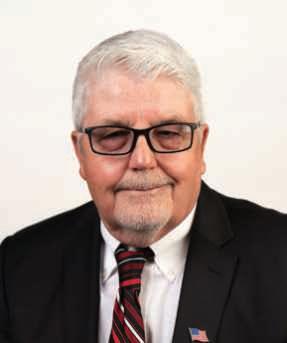
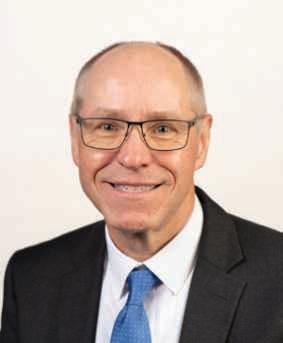
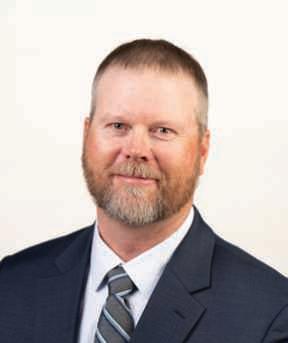
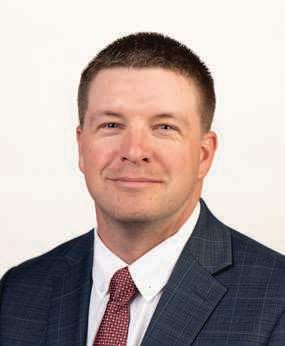
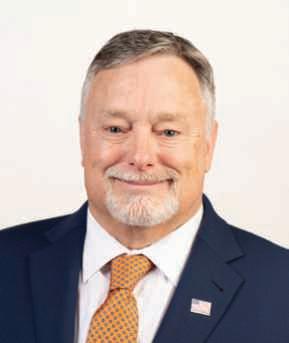
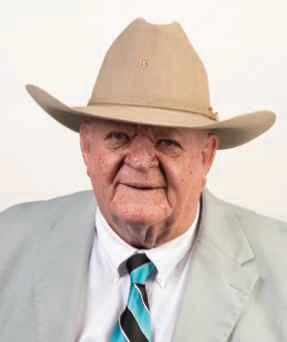

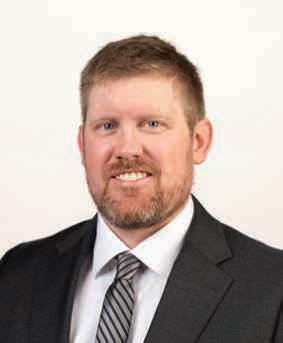
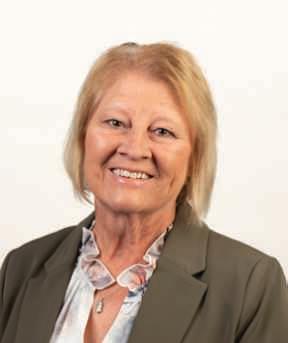
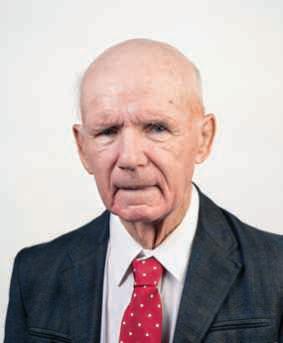
If you locate your account number anywhere in this issue of West River Electric’s Cooperative Connections, you will be a winner. There will be five account numbers placed randomly throughout the publication. If you spot your account number and notify our office before the 10th of the next month, you will receive a $10 credit on your next bill. 11854400
3250 E Hwy 44, Rapid City, SD
Monday-Friday 7 a.m. to 5 p.m.
605-393-1500
1200 W 4th Ave, Wall, SD
Monday-Friday 7 a.m. to 5 p.m. 605-279-2135
A night depository is available at both offices for your convenience. 11874400
Contact 605-279-2135 or 605-393-1500 during office hours. E-mail us at info@westriver.coop for questions on your account.
Contact 605-279-2135 or 605-393-1500 in the event of an outage or other emergency. Our calls are answered 24/7.
SEPT. 14-OCT. 27
Mazing Acres Fall Festival
10 a.m. to 6 p.m. 30851 433rd Ave. Yankton, SD 605-760-2759

SEPT. 27-29
Coal Springs Threshing Bee and Antique Show Meadow, SD 605-788-2299
OCT. 4-5
Holman Acres Pumpkin Fest and Vendor Show Philip, SD 605-441-1060
OCT. 4-5
To have your event listed on this page, send complete information, including date, event, place and contact to your local electric cooperative. Include your name, address and daytime telephone number. Information must be submitted at least eight weeks prior to your event. Please call ahead to confirm date, time and location of event.
25th Annual Pumpkin Fest Webster, SD https://webstersd.com/home
OCT. 5-6
Run Crazy Horse Marathons Crazy Horse www.runcrazyhorse.com
OCT. 5
Rapid Valley United Methodist Church Fall Festival Carnival 11 a.m.-3 p.m. Rapid City, SD 605-393-1526
OCT. 5-6
The Black Market W.H. Lyon Fairgrounds Sioux Falls, SD 605-332-6004
OCT. 6
Giant Pumpkin Festival Bentley Memorial Building Bison, SD
Enter Pumpkins by 11:30 a.m. 605-244-5475
OCT. 10-11
Rural Women in Agriculture Conference
Oct. 10 from 1-9 p.m. Oct. 11 from 7 a.m.-3 p.m. The Lodge of Deadwood Deadwood, SD SouthDakotaWomeninAg.com
OCT. 11-12
Junkin’ Market Days Ramkota Exhibit Hall Sioux Falls, SD 605-941-4958
OCT. 19
Buffalo County Fall Ball Live Music and Food 8 p.m. Fire Hall Gann Valley, SD
OCT. 25-27
Forest of Fears Haunted Trail
7 p.m.-10 p.m.
Reclamation-Ranch 40787 259th St. Mitchell, SD
OCT. 26
Hill City Children’s Boo Bash and Pumpkin Festival Hill City, SD 605-574-2368
OCT. 26
Hartford Women of Today Fall Craft Fair
9 a.m.-3 p.m. West Central Becker Center Hartford, SD 605-359-2049
OCT. 26
Owl-O-Ween Noon-5 p.m. Black Hills Raptor Center Caputa, SD 605-391-2511
OCT. 31
Treat Street
5:30 p.m.-7 p.m. Main St. Milbank, SD 605-432-6656
MilbankSD.com/Chamber
OCT. 31
Rapid Valley United Methodist Church Trunk-or-Treat
4:30-7 p.m. Rapid City, SD 605-393-1526
NOV. 2
Fall Fling Craft Show
10 a.m.-2 p.m.
Dakota Christian School Corsica, SD 605-366-7940
NOV. 2
Reliance Christmas Carousel
9 a.m.-3 p.m. Legion Hall
Reliance, SD 605-730-0553
NOV. 22-23
Holiday Arts Christmas Craft Show
Davison County Fairgrounds Mitchell, SD 605-359-2049
Note: Please make sure to call ahead to verify the event is still being held.